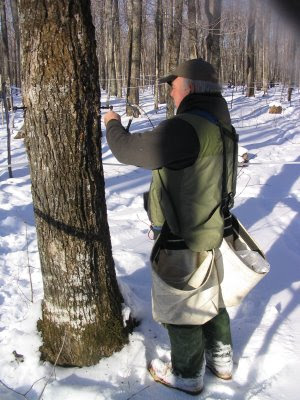Contributed by Laura Waite,
Virginia Tech department of hospitality & tourism managementAccording to the Center for Disease Control, 76 million Americans contract a food-borne illness every year. Of those, 325,000 will be hospitalized and 5,000 will die. Incidentally, food-borne illness can cost a restaurant up to $74,000 every time one customer gets sick. A 2006 Michigan State University study revealing American attitudes on food safety found that "84% of those surveyed would add $270 a year to their food bill (5% more) if food-borne disease could be reduced by 50%." Hence, food safety affects the bottom line as much as it affects lives.
To reduce the risk of food-borne illness, a food service operation can implement a Hazard Analysis Critical Control Point (HACCP) plan; however, implementing a HACCP plan, while relatively simple, is not a one-step task. In fact, it is a seven-step process, which is outlined in ServSafe Essentials, a National Restaurant Association (NRA) publication that prepares individuals to take the ServSafe certification exam. The certification lasts for five years and is recognized nationally. ServSafe has certified more than 1.5 million foodservice professionals, but that makes up just 11% of the NRA's estimated 13.1 million foodservice employees.
Of all the employees in a foodservice operation, it is paramount that managers are ServSafe certified because, according to the U.S. Department of Labor Statistics, the manager must "make sure that health and safety standards and local liquor regulations are obeyed." The U.S. Department of Labor Statistics also indicates, "managers oversee the training of new employees and explain the establishment's policies and practices." Therefore, managers must understand the basics of food safety in order to communicate those basics to their staff. Also, if a HACCP plan is implemented in a foodservice operation, the managers will be in charge of its implementation.
Many of the foodservice industry's best managers come from hospitality programs at four-year institutions; however, Chef James E. Sexton, a Virginia Tech Hospitality and Tourism Management (HTM) Department instructor, believes that there are not enough four-year institutions providing food-safety certification courses, while almost all two-year institutions provide them. Virginia Tech, however, offers a ServSafe certification course, thanks to Sexton. Moreover, Virginia Tech requires all of its HTM students to take the course.
Sexton came to Virginia Tech by default. In 1988, while teaching a culinary arts program in Chicago, he was asked to recommend a student for a position at the University of Toledo, in Ohio, which entailed catering functions for the college's president. Instead of recommending a student, he went to the interview himself and got the job. Nine months later, the president of the University of Toledo became president of Virginia Tech and hired Sexton as the coordinator of special activities. He catered all of the special functions for the president while teaching Production, Purchasing and Management (HTM 3414).
Sexton had a twelve-year struggle with Virginia Tech to make his class a certification course. He wanted to give his students the opportunity to become certified to ensure the their future success and to provide the industry with quality managers. Virginia Tech, while having the similar goals, would not let him proceed because most food-safety certification textbooks are written at a tenth-grade reading level. Sexton says that most four-year intuitions do not offer food-safety certification courses for the same reason.
Before Sexton's class became a certification course, the Food Science department taught food safety; however, the course presented the concept from the perspective of the cattle industry and neglected to address food preparation. "The course was not sufficient," says Sexton. After observing the lack of food safety during lab, Sexton began his pursuit to make his class a certification course. He has now been specifically teaching ServSafe for over five years because it provides an excellent starting point for teaching students how to implement a HACCP plan.
 Chef James Sexton (back right, in Virginia Tech cap) with his students from last semester
Chef James Sexton (back right, in Virginia Tech cap) with his students from last semesterVirginia Tech describes HTM 3414 as a course in "purchasing, preparation, service, and management of a large quantity food service operation." In addition to a lecture, the course includes a lab, which promotes experiential learning by requiring students to implement a HACCP plan. Students also learn the basics of cooking and food safety by preparing food and designing plates.
For the lecture, Sexton divides the semester into three sections: introduction to food safety and restaurant management, Servsafe Essentials and standardized recipes. Each section is associated with an exam. The introduction to the course covers common food-borne illnesses, the flow of food and the basics of running a safe kitchen. The Servsafe Essentials section follows the lesson plans laid out by the Servsafe Essentials textbook. In this section, Sexton goes over the slides provided by Selvage, which provides more detail on the flow of food and food-borne illness and explains sanitation and pest management. After learning this material, Sexton's students are required to take the Servsafe certification exam. The third section of the course, standardized recipes, teaches students the importance and components of standardized recipes so that students learn how to create their own standardized recipes.
In lab, a small group of students meet once a week. Each week, the lab has a different theme: knife skills, vegetable, starch, soup, poultry, pork, beef, seafood and dessert. Before lab each student must complete a lab assignment, which has a vocabulary section where students must define words such as bivalve shellfish, crepe, reduction and demi-glace. It also has a second section that contains questions like, "What are the five classical lead sauces?" At the beginning of lab Sexton discusses aspects of the lab assignment and does a demo.
The students in lab are divided into three groups. Group one begins the semester as the chef group. The chef group designates a head chef, a sous chef and one or two stewards/HACCP administrators. The head and sous chefs are responsible for making sure the lab is set up and cleaned up properly. The stewards/HACCP administrators pass out aprons to the class, make sure the dishwasher is at the proper temperature, fill the sinks, check the pH of the sanitizing sink and fill cups with ice water so that the class may calibrate all the thermometers. Group two is the clean-up group. This group follows a checklist to ensure that the lab is clean and sanitary both during and after the lab. Group three gets a break and is only responsible for the recipes assigned to them. The students then rotate through all three groups and are evaluated on how well they fulfilled their responsibilities. Their food is also evaluated at the end of the lab. They must prepare and plate recipes written and compiled by Sexton.
Sexton prides himself on the success of his students. In class, he establishes credibility with his new students by sharing the professional experiences of his former students. For example, a former student, who had been ServSafe certified through the class, forgot to pick up his certification after he passed the test. While the student was working at a local restaurant the health inspector approached him. Since his superior was not present and he did not have proof of certification, the student had to successfully demonstrate his knowledge to the health inspector. The student did, and the owner awarded him cash because the alternative, closing the restaurant, would have cost the owner exponentially more money.
According to the NRA, the restaurant industry is the largest employer outside of government, and "the number of foodservice managers is projected to increase 11% from 2008 to 2018." This creates a high demand for qualified managers, and graduates of two-year institutions may actually have a leg up on graduates of four-year institutions if they are certified. Food safety aside, Sexton says in order to succeed in the foodservice industry, "Love what you do."























